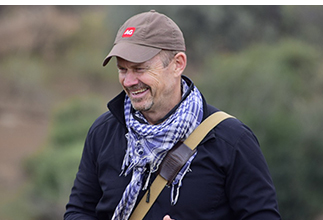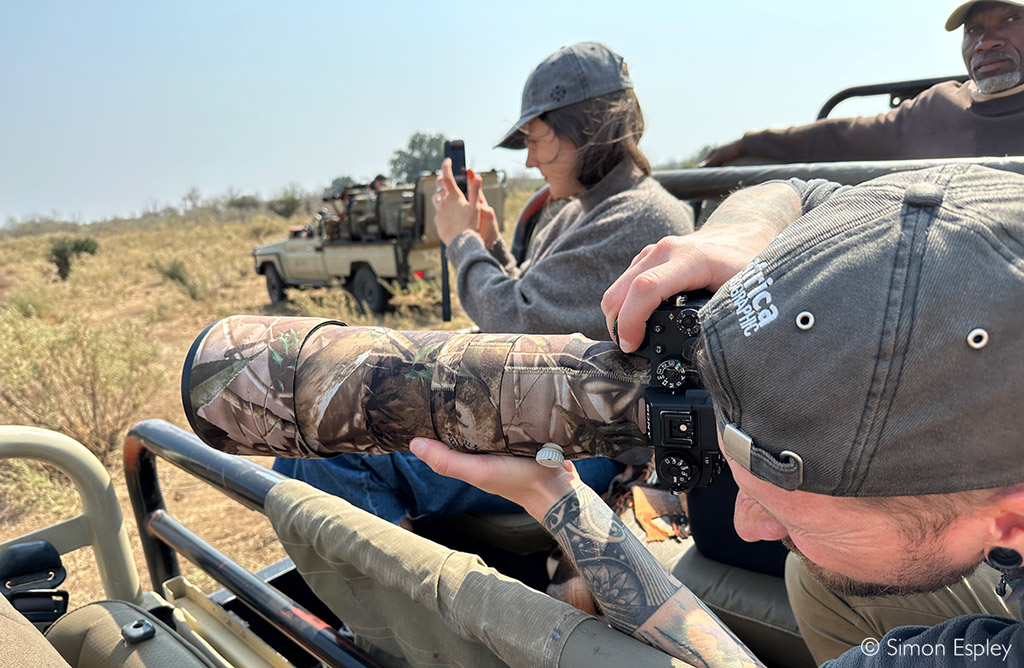
This is a copy of our weekly email newsletter. Subscribe here to receive the newsletter.
Giraffes to Iona + penultimate pics + best of Southern Africa

By now you will know that African Parks has started releasing the rhinos purchased from farmer John Hume into the wild. The plan is to release their 2,000 rhinos over 10 years.
Since Hume first started lobbying for international trade in rhino horn, the conservation world has been divided about the likely impact of such a decision on WILD rhino populations. But that is not the focus of my observations today.
This brave and visionary move by African Parks is typical of their way. No fuss, no bragging or drama – get on with the job. Their conservation model is one of boots on the ground and local community benefaction and their success throughout Africa speaks for itself.
And while some human rights extremists continue to hammer what they term ‘fortress conservation’ because it apparently removes some inalienable human right to destroy nature for short-term gain, the African Parks team maintains a laser focus on doing good for Africa’s ecosystems, biodiversity and people. In a world where so much is going horribly wrong, let’s celebrate the successes. A luta continua!

Simon Espley – CEO, Africa Geographic
From our Editor – Taryn van Jaarsveld

This week’s Photographer of the Year galleries (check them out below) include an image of a fascinating and rather bewildered-looking creature: a Zanzibar red colobus monkey. This colobus, found only in Zanzibar, is one of the rarest primates on the planet. But did you know they share a unique characteristic with cows? Both cows and colobus monkeys have stomachs with four chambers for digesting greens. But the monkeys are not able to digest the non-native trees and farming crops they are inevitably attracted to, which has sparked a habit: they eat charcoal (mostly stolen from humans) to settle their indigestion.
The Zanzibar red colobus came close to extinction a few years ago when their population dropped below 2,000. But conservation efforts, including the establishment of Jozani Chwaka Bay National Park, instating communities as shareholders in the park and building speed bumps to prevent cars from colliding with monkeys, helped bolster numbers. Latest estimates put the population at 6,000 (still low). But the monkeys attract 60,000 tourists a year, and Jozani Forest is better protected than ever before as a result. An outstanding example of how conservation of species can have far-reaching benefits to economy, communities and planet.
This week we celebrate another win for Iona National Park in Angola, with more giraffes returning to the park in efforts to restore biodiversity. See more below.

Story 1
https://africageographic.com/stories/more-angolan-giraffes-return-to-iona-np/
GIRAFFES TO IONA
More Angolan giraffes have returned to Iona NP, Angola, as part of a conservation initiative to restore and enrich the park’s biodiversity
Story 2
https://africageographic.com/stories/photographer-of-the-year-2024-weekly-selection-week-10-gallery-1/
GALLERY 1
See our Photographer of the Year Week 10 entries. There is just over a week left to enter for a chance to win – don’t miss out!
Story 3
https://africageographic.com/stories/photographer-of-the-year-2024-weekly-selection-week-10-gallery-2/
GALLERY 2
More stunning pics from Photographer of the Year Week 10. You could win a lion collar sponsored in your name & a safari
 TRAVEL DESK:
TRAVEL DESK:
Don’t miss out on our two exclusive safaris – thrilling introductions to Southern Africa’s most coveted destinations. Explore our options below, or better yet, combine the two for a truly unique and unforgettable journey. Click here for free safari planning

Photographer of the Year – 1 week to go
Have you submitted your entries for Photographer of the Year 2024? There is just ONE WEEK LEFT to enter. Visit our website for all you need to know, from how and where to enter, to our competition rules and the epic prizes on offer – including a conservation safari and a lion research collar sponsored in your name. Don’t miss your chance to become the next Africa Geographic Photographer of the Year!

 WATCH: Last chance to enter Photographer of the Year 2024! We’re looking for your photos that celebrate Africa and capture the continent’s splendour, from wildlife action and landscapes to African culture and safari experiences. There are some epic prizes up for grabs for our three winners. See more here. (01:29) Click here to watch
WATCH: Last chance to enter Photographer of the Year 2024! We’re looking for your photos that celebrate Africa and capture the continent’s splendour, from wildlife action and landscapes to African culture and safari experiences. There are some epic prizes up for grabs for our three winners. See more here. (01:29) Click here to watch
For more videos celebrating Africa, check out our videos here
To comment on this story: Login (or sign up) to our app here - it's a troll-free safe place 🙂.![]()






